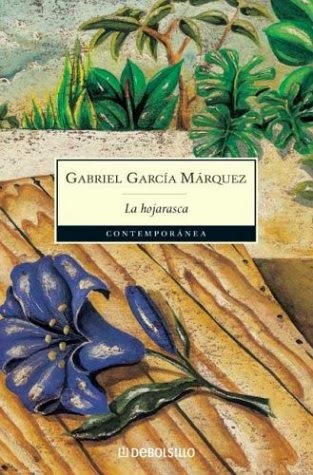Por primera vez he visto un cadáver. Es miércoles, pero siento como si fuera domingo porque no he ido a la escuela y me han puesto este vestido de pana verde que me aprieta en alguna parte. De la mano de mamá, siguiendo a mi abuelo que tantea con el bastón a cada paso para no tropezar con las cosas (no ve bien en la penumbra, y cojea), he pasado frente al espejo de la sala y me he visto de cuerpo entero, vestido de verde y con este blanco lazo almidonado que me aprieta a un lado del cuello. Me he visto en la redonda luna manchada y he pensado: Ése si yo, como si hoy fuera domingo. (p. 13)
For the first time I have seen a corpse. It's Wednesday, but I feel like it's Sunday because I have not gone to school and I have this green corduroy dress that squeezes me somewhere. From Mom's hand, following my grandfather groping with his stick at every step to avoid tripping over things (he can not see well in the dark, and is lame), I passed by in front of the mirror in the room and I've seen my whole body, dressed in a green and white starched tie that squeezes my neck to one side. I have seen myself in the round stained moon and I thought: That's like me, as if today were Sunday.
As early as his first novel, La hojarasca (1955), Gabriel García Márquez had begun to experiment with utilizing dramatic first paragraphs set in media res in order to capture immediately the reader's attention. There is a hint here of García Márquez's memory of ice scene at the beginning of his 1967 masterpiece, Cien años de soledad, not just in the conflation of (near) death and childhood, but also in way that the present and past merge to create something that occupies a nebulous space between the two. Yet despite this, there is a sense that La hojarasca is less nuanced, as if García Márquez were just experimenting with themes and motifs that he would explore in his later fiction.
The story revolves around the recent death of an unnamed doctor who arrived in Macondo in the wake of United Fruit's arrival, one, but an infamous one, of the wave of hojarascas (a rough equivalent in English would be drifters) that came to Macondo in the early 20th century. This doctor was greatly despised by the villagers for reasons that only become apparent late in the story. There are only three people, the elderly grandfather (a former colonel), his daughter, Isabel, and her young grandson, who observe any sense of decorum. In a sense, made crystal clear by the quote provided in the epigraph, each of the three plays in some form or fashion the role of Antigone, seeking burial for the hated deceased.
García Márquez does not tell this tale in a linear fashion. As the PoV moves between the three generations of the grandfather's family, elements that happened just recently bump up against those of decades before. Each family member express themselves through a stream of consciousness that manages to capture the tumult of Macondo's past. Echoes of Columbia's devastating early 20th century civil war are seen not just in the first, brief appearance of Aureliano Buendía, but also in references to other characters who gain a greater, sometimes more tragic depth in the later Cien años de soledad. Through it all, the situation of the now-dead doctor becomes clearer and more central to other events that transpire (or are merely hinted at in certain scenes) throughout the novel.
For a first novel, La hojarasca is better than average, with themes of tragedy and solitude that are later echoed in García Márquez's later fiction. Yet La hojarasca feels incomplete, as if there were other, more symbolic, narrative layers that García Márquez did not develop fully. The entangled web of village hurts and anger only hints at what he later covered in subsequent Macondo stories. The characters are sketchier, as if García Márquez was uncertain how to develop them beyond the plot exigencies. These weaknesses, which perhaps are such when compared to the author's later works, do not make La hojarasca a poor or mediocre novel. But they do serve as a reminder that García Márquez continued to mine the material that he developed (or perhaps discovered is a more apt verb to describe what occurs here?) to great effect in the following twelve years. If only there were more first novels that were like this.











No comments:
Post a Comment